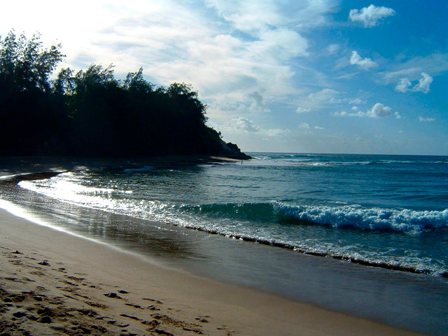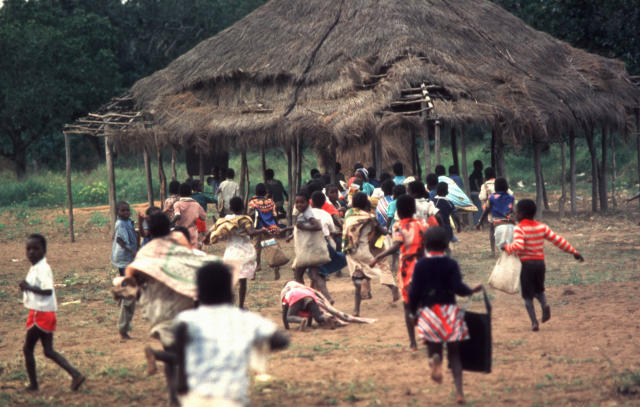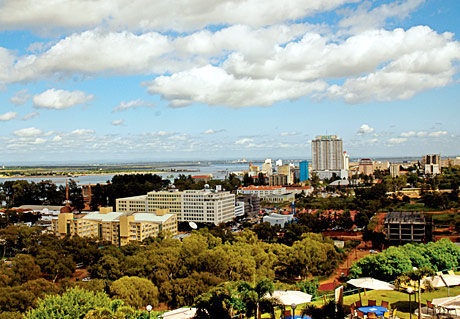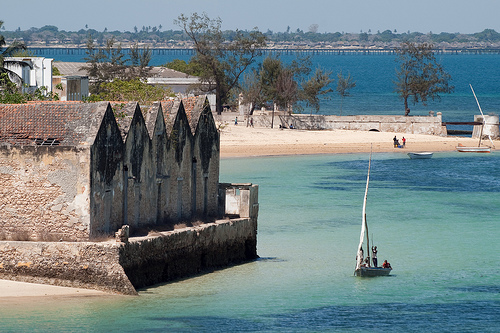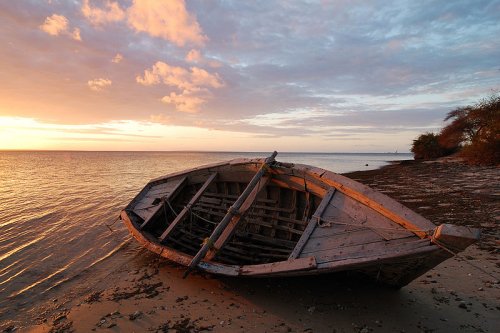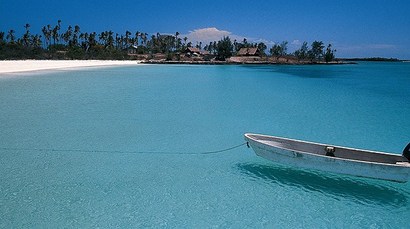PeopleMozambique has an area of over 380,000 sq miles and a population of 23 million people. Almost half of the population resides in the two north-central provinces of Zambezi and Nampula. The official language is Portuguese and Maputo is the capital and largest city. People of Bantu heritage comprise most of the population of the country, though they have many different tribal affiliations with the Macua as the dominant group. Most of these different affiliations tend to congregate in their own ancestral lands, and there is also a minority of White Africans, Euro-Africans, Indians and Chinese.
|
The Republic of Mozambique is in southeastern Africa. It has a coastline of 1500 miles along the Indian Ocean and is bordered by Tanzania to the north, Malawi and Zambia to the northwest, Zimbabwe to the west and Swaziland and South Africa to the southwest. After gaining independence from Portugal the country went through a protracted period of civil war. Mozambique is worth visiting for the stunning beaches, excellent diving, and offshore islands that border on the magical. Snorkeling in the archipelago or sailing through the mangrove filled channels on a dhow are popular attractions. The Portuguese colonization, lasting almost 500 years, left an imprint of colonial architecture that is also worth seeing.
|
Geography
Mozambique has a land size comparable to Turkey and is the 35th largest country in the world, divided naturally into two topographical regions by the Zambezi River. The northern region has a narrow coastline that moves inland to hills and low plateaus, and further west to rugged highlands. The south of the Zambezi River gives way to broader lowlands with a plateau and mountains. The climate of the region is evenly divided into just two main seasons, wet and dry. The wet season is from October to March and coastal precipitation is heavy, about 40 inches per year. Cyclones are also common during the wet season and temperatures in the capital, Maputo, could range from 55 to 88 degrees fahrenheit through the year.
HistoryThe Bantu people migrated to this area in the first and fourth centuries and established agricultural communities along the Zambezi River. The Portuguese were attracted to the area in search of gold and started colonizing in the 15th century, and they dominated all trade in the area until the 1700's, when their influence began to decline after the Arab conquest of one of the key ports. Frequent independence movements culminated in the formation of FRELIMO (The Mozambique Freedom Movement), which launched a guerilla movement against Portuguese rule. This led to a war that spilled over into Angola and other Portuguese held territories, causing much of the Portuguese population to leave the country. Finally gaining independence in 1975, the country then went into a civil war between the opposing communist and anti-communist groups lasting until 1992, when peace returned, supervised by a United Nations peacekeeping force.
|
Famous Attraction
The Gorongosa National Park is located in the Great Rift Valley and has a unique combination of ecosystems that has given rise to one of the most dense populations of wildlife in Africa. There is a park entrance fee and accommodations are available. Bird watching and viewing game are the main attractions, and hiking trails with necessary guides are also available. Another place to visit while in Mozambique is the Bazzaruto Archipelago, a string of islands with beaches and a natural paradise with all sorts of wildlife. You can enjoy excellent diving and snorkeling as well as fishing and dhow trips, sure to please the most adventurous. While in this area you will want to schedule a visit to the marine national park, where you can see a lot of coral and marine life. You can spot Dolphins and dugongs, and in summer, perhaps even a few whale sharks.
NightlifeMaputo, the capital of Mozambique, has a lively nightlife, especially on weekends when revelers and participants party right through the night. The style of music in most of these nightspots varies from Western music to Mozambican rhythms. The national company of Song and Dance has rehearsals that are open to the public and a great source of entertainment, with vibrant music and astonishing, physically demanding forms of dance. Most major towns around Mozambique have cinemas and you can always catch the latest Hollywood movie.
|
Culture
There is a strong influence of the Arabs in the culture of Mozambique, a remnant of the traders who constantly mingled with the local population over many centuries, even creating the Swahili language spoken and understood in almost all of coastal Africa. Portuguese is the official language but it is spoken by only 40% of Mozambicans, and the rest of the country has their own tribal and other dialects to fall back on. English is taught in all schools and is vastly used in business. 30% of population is practicing Catholics while another 10% to 15% follow Islam, and the rest of the country follows their own traditional beliefs. The constitution is mainly secular and allows full freedom of religious expression.
CuisineThe Portuguese who influenced Mozambique for over 500 years left their imprint on the food habits in the country. Arabs introduced salt to the Mozambicans and taught them to use it to preserve meat and other food items. Cassava, a starchy root, and cashew nuts are also important in the cuisine and appear in many traditional dishes. The Portuguese introduced the use of onions, bay leaves, garlic, coriander, paprika, chili peppers, and wine, and these items are now a part of most Mozambican dishes. Prego (a steak roll), rissois (battered shrimp), Espetada (kebabs), and puddings, are all part of the Portuguese influence. One of the most popular dishes in the country is whole chicken in piri-piri sauce. This is a sauce made from pepper, lemon, parsley and garlic all cooked in butter or oil. The sauce is also used with a lot of other dishes.
|
Qunar

